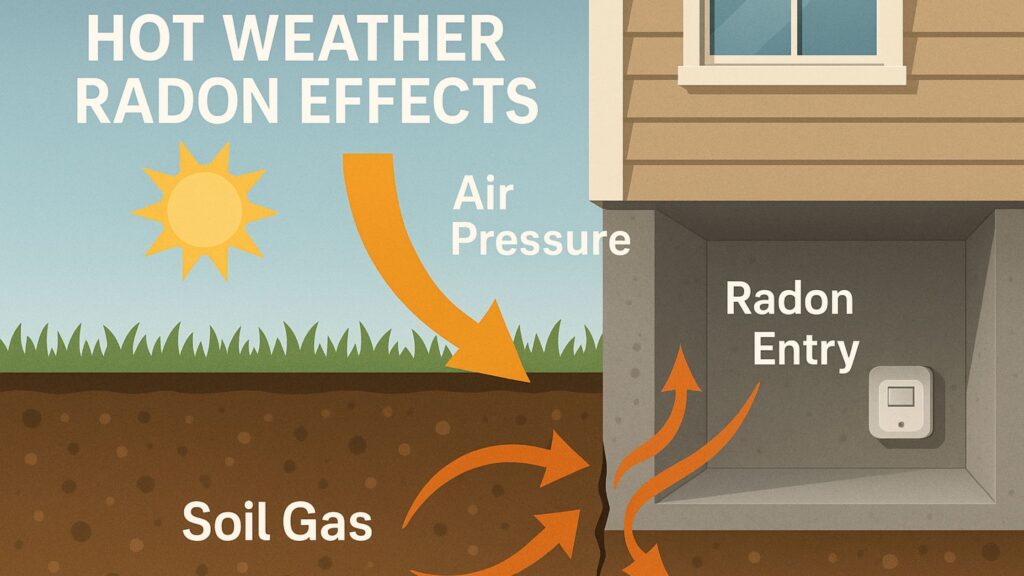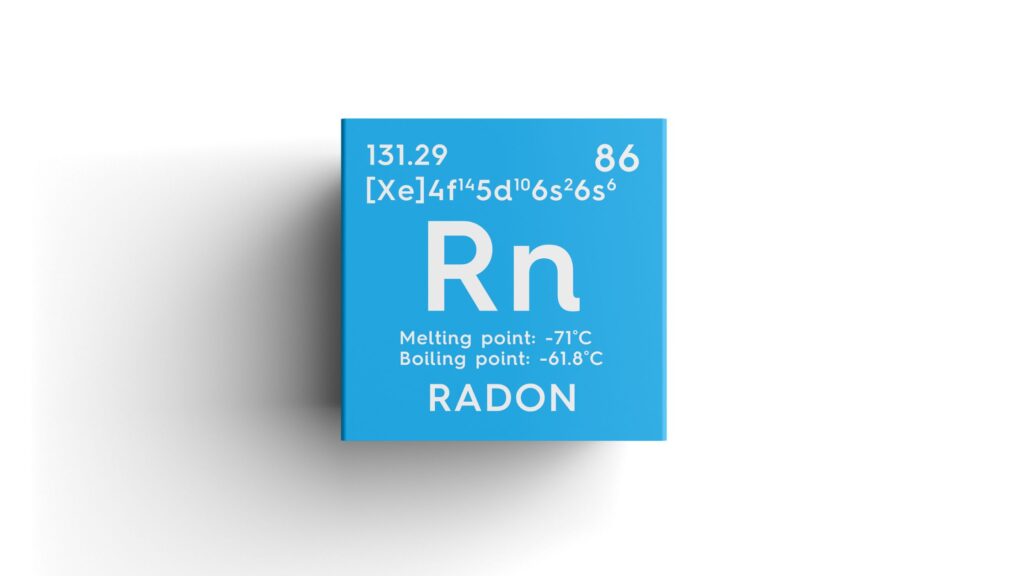Did you know that the weather outside can directly affect the air quality inside your home? While many people focus on indoor air pollutants like dust or allergens, radon—a colorless, odorless, and radioactive gas—can silently build up in your home, especially when weather conditions change. In this article, we’ll explore how weather effects on radon can influence radon levels in your home and offer solutions for managing radon exposure effectively.

What Is Radon and How Does It Enter Your Home?
Before we explore how weather impacts radon levels, it’s essential to understand what radon is and how it infiltrates your home. Radon is a naturally occurring radioactive gas that forms as uranium, thorium, and radium break down in the soil, rock, and water beneath your home. Unlike other gases, radon is both invisible and odorless, which makes it particularly dangerous.
Radon is most commonly found in low-lying areas and homes built on soil with high levels of uranium. While radon can affect any home, regardless of its age or condition, older homes with cracks or faulty construction are at higher risk for radon infiltration. Additionally, homes that are sealed tightly in the winter or during cooler months may see increased radon accumulation as airflow decreases and the gas has fewer avenues for escape.
Managing Radon Risks: The Role of Weather and Climate
Radon is a naturally occurring radioactive gas that can seep into homes through cracks in the foundation, posing serious health risks over time.
1. Temperature Changes
In cold weather, warm indoor air rises and creates a vacuum that draws radon from the soil into the home. This effect is intensified in winter when homes are tightly sealed. The resulting pressure difference increases the amount of radon entering the home.
2. Barometric Pressure Changes
When barometric pressure drops during storms or weather fronts, it creates a vacuum effect that allows radon gas to enter homes more easily. The lower pressure outdoors draws radon through cracks in the foundation. This can lead to a temporary spike in radon levels indoors.
3. Rain and Snow
Heavy rain or melting snow saturates the soil, preventing radon from escaping naturally. As a result, radon gas is forced into the home through foundation cracks and gaps. This can cause an increase in indoor radon levels, especially during and after rainfall.
4. Wind and Windy Conditions
Wind can create negative pressure zones around a home, particularly along walls and openings. This pressure difference can pull radon gas into the home through cracks in the foundation. Strong winds increase the likelihood of radon infiltration, especially in areas with poor sealing.
5. Seasonal Soil Expansion and Contraction
As seasons change, the soil expands and contracts with temperature fluctuations. During the colder months, frozen soil becomes denser, trapping radon gas underground. In warmer months, the thawing soil allows more radon to escape into the home, leading to higher radon levels.
Weather and climate strongly affect radon levels at home. Changes in temperature, pressure, rain, snow, and wind can all increase radon infiltration.

How Weather Conditions Affect Radon Levels and Health
Understanding how the weather affects radon levels is crucial for your health. Long-term exposure to elevated radon concentrations significantly increases the risk of lung cancer, making it a serious concern for homeowners. Radon is the second leading cause of lung cancer in the United States, and since it is both colorless and odorless, its presence can often go undetected. Weather-related changes, such as temperature fluctuations, barometric pressure drops, and moisture from rain or snow, can cause radon levels to rise or fall unpredictably.
Radon is not a static threat—its levels can vary significantly from day to day due to fluctuating weather conditions. For instance, low-pressure systems can draw more radon into your home, while cold temperatures can increase its concentration due to the stack effect. Learn more about Accuracy of the Home Radon Detectors.
Effective Radon Management Strategies for Changing Weather
Radon levels in your home can fluctuate with weather conditions, so it’s essential to take proactive steps to manage the risks.
- Test During High-Risk Weather: Test your home during extreme weather conditions like heavy rain, snow, or rapid temperature changes.
- Improve Ventilation: Open windows during warmer weather to improve ventilation and reduce radon. However, this may not be sufficient in high-risk radon areas.
- Use Continuous Radon Monitoring: Install a continuous radon monitor to track fluctuations in radon levels year-round and stay informed about significant changes.
- Seal Cracks and Gaps: Seal cracks in your foundation and gaps around pipes to reduce radon infiltration, especially during weather conditions that cause pressure differences.
By following these radon management strategies, you can mitigate the risks associated with fluctuating weather conditions.
Conclusion
Weather significantly impacts radon levels in your home. By understanding how temperature, pressure changes, and other weather conditions affect radon, you can take proactive steps to manage the risks. Regular testing, sealing cracks, and using continuous radon monitoring are key to maintaining safe indoor air quality. Stay informed and protect your home from radon exposure. For expert testing and mitigation services, DSM Radon is here to help you manage radon risks effectively.

FAQs
1: Can weather cause radon levels to spike?
Yes, weather changes such as low barometric pressure, heavy rainfall, or rapid temperature changes can cause temporary spikes in radon levels.
2: Is opening windows enough to reduce radon levels?
While ventilation can help, it is not enough to reduce radon levels significantly. A radon mitigation system is the most effective solution.
3: How often should I test for radon?
It’s recommended to test your home for radon every 2–5 years, and after significant weather events, such as storms or heavy rain, that could affect radon entry.
4: Can a radon mitigation system handle weather fluctuations?
Yes, a properly installed radon mitigation system is designed to work effectively despite weather changes, but regular maintenance is necessary to ensure its optimal performance.





